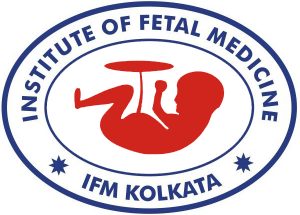Non-Invasive Prenatal Testing (NIPT) has revolutionized the field of fetal medicine over the past decade. This groundbreaking technology has enabled expectant parents to gain valuable insights into their baby’s health without invasive procedures like amniocentesis or chorionic villus sampling. In this comprehensive review, we will delve into the latest advancements in NIPT, shedding light on its accuracy, safety, and the potential it holds for the future of prenatal care.
Understanding NIPT
Non-Invasive Prenatal Testing, often referred to as cell-free DNA testing, relies on the analysis of cell-free fetal DNA fragments in the maternal bloodstream. These fragments are shed by the placenta and circulate in the mother’s blood, offering a unique window into the developing fetus’s genetic profile. Unlike traditional prenatal testing methods, NIPT doesn’t carry the same risk of miscarriage and is increasingly being used as a first-line screening tool for a variety of fetal conditions.
Evolution of NIPT
NIPT initially gained recognition for its ability to detect common chromosomal abnormalities such as Down syndrome (Trisomy 21), Edwards syndrome (Trisomy 18), and Patau syndrome (Trisomy 13). However, advancements in sequencing technology and our understanding of the fetal genome have expanded its scope. Today, NIPT can provide information on a range of genetic conditions, including sex chromosome abnormalities, microdeletions, and single-gene disorders. As technology continues to improve, the list of detectable conditions is likely to grow.
- Early NIPT for Common Chromosomal Abnormalities: Begin by discussing the initial applications of NIPT, which primarily focused on detecting common chromosomal abnormalities like Trisomy 21 (Down syndrome), Trisomy 18 (Edwards syndrome), and Trisomy 13 (Patau syndrome). Mention how this represented a major leap forward from traditional prenatal screening methods.
-
Expansion of Detectable Conditions:
Highlight how, over time, NIPT has evolved to detect a broader range of genetic conditions. This expansion includes the ability to identify sex chromosome abnormalities, microdeletions, and single-gene disorders. Emphasize the significance of these advancements in providing more comprehensive prenatal information.
-
Technological Improvements:
Explain the role of advancements in sequencing technology and bioinformatics in enhancing the accuracy and scope of NIPT. Mention the shift from targeted approaches to whole-genome sequencing and the associated improvements in sensitivity and specificity.
-
Clinical Implementation:
Discuss how NIPT has transitioned from being primarily a research tool to a widely accepted clinical practice. Highlight the growing number of healthcare providers and expectant parents who rely on NIPT for early screening.
-
Regulatory Approvals:
Mention the role of regulatory agencies in approving and regulating NIPT tests. Explore how different countries have varying levels of regulation, contributing to the global adoption of NIPT.
-
Ongoing Research:
Note that research in the field of NIPT continues to evolve. New studies and trials are exploring the potential of NIPT for detecting additional rare genetic conditions and other pregnancy-related complications.
-
Cost and Accessibility:
Discuss how the cost of NIPT has gradually decreased, making it more accessible to a broader range of expectant parents. Highlight the importance of balancing cost considerations with the potential benefits of early detection.
-
Challenges and Limitations:
Address the challenges and limitations that still exist with NIPT, including false-positive and false-negative results, the need for follow-up diagnostic testing, and the ethical concerns related to selective abortion.
-
Future Directions:
Conclude the section by offering a glimpse into the future of NIPT. Mention emerging technologies, such as single-molecule sequencing, which have the potential to further improve NIPT’s accuracy and cost-effectiveness.
Accuracy and Reliability
One of the key drivers behind the widespread adoption of NIPT is its high accuracy. Studies have shown that NIPT can detect common chromosomal abnormalities with sensitivity and specificity exceeding 99%, surpassing the accuracy of traditional serum screening. However, it’s important to note that NIPT is still considered a screening test and not a diagnostic one. In cases of positive results, further diagnostic testing through procedures like amniocentesis is recommended to confirm the findings.
Safety and Ethical Considerations
Compared to invasive procedures, NIPT offers a significantly safer option for expectant mothers and their unborn children. The risk of miscarriage associated with amniocentesis and chorionic villus sampling is virtually eliminated with NIPT. Nevertheless, it raises ethical questions about the potential for prenatal genetic profiling and selective abortion based on the results. These concerns underscore the importance of responsible counseling and informed decision-making for expectant parents.
Future of NIPT
As technology continues to advance, the future of NIPT holds exciting possibilities. Researchers are working on improving the accuracy of NIPT for detecting rare genetic conditions and expanding its utility to include early detection of pregnancy complications, such as preeclampsia and preterm birth. Additionally, the development of single-molecule sequencing techniques may provide even more comprehensive and cost-effective NIPT options.
Final Words
Advancements in Non-Invasive Prenatal Testing have transformed the landscape of prenatal care, offering expectant parents a safe and highly accurate method for assessing the health and genetics of their unborn child. As our understanding of the fetal genome deepens and technology continues to evolve, the potential applications of NIPT are vast. However, it’s crucial to approach these developments with an ethical and responsible perspective, ensuring that NIPT benefits the well-being of both expectant parents and their future children. In the years to come, NIPT is likely to play an even more significant role in prenatal care, further enhancing the health and well-being of mothers and their babies.

